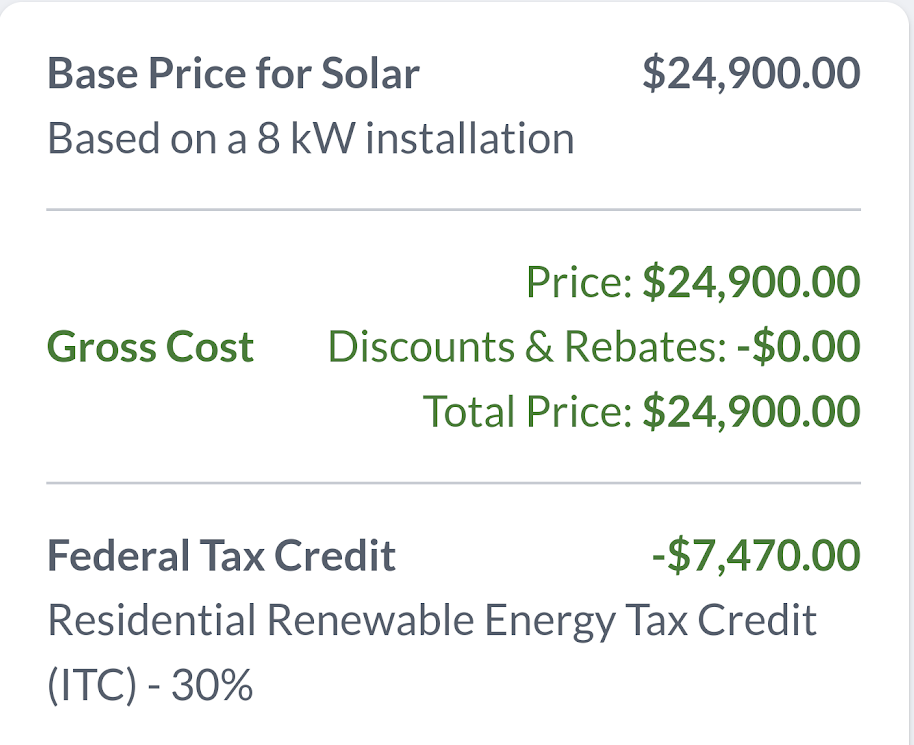For years now, I’ve wanted to get solar panels for my house in Austin, both because it feels morally responsible and because I’m a geek and powering my house with carbon-free fusion seems neat.
Economically, I assume I’ll eventually break even with solar power, but probably not for a long time– my house isn’t large by Texas standards, and I use energy pretty efficiently. In August 2022, my monthly usage peaked at 1347 kilowatt hours:
I held off on installing solar for a long time because I was afraid that it was going to end up like LED lighting– I buy in, and then the tech improves rapidly, with costs dropping like a rock and efficiency improving every year. But I’ve gotten tired of waiting, and tired of being grumpy about every sunny day in the blistering Austin summer.
In selecting a solar provider, I ended up doing less due-diligence than I’d planned, but got a few recommendations from folks on Twitter and in my neighborhood, ultimately settling on a local company, Native Solar. I suspect they are far from the cheapest provider (e.g. Tesla Solar quoted panels for thousands less), but in reading the reviews of solar companies, many have horrible reviews for both installation and ongoing support, and I don’t need more hassle in my life.
I selected an 8Kw array, consisting of twenty panels and inverters:
The array is expected to generate 141% of my current power use, although I expect my power use will be higher in the future, thanks to my electric car and possible eventual switch to an induction stovetop and, possibly in a few years, a heat pump.

In Austin, solar power is sold to the grid at 9.5 cents per kWH, which is somewhat more than I pay for it, even at the “Tier 3” pricing you can see in my statement above.
The array was expensive, with total payments of $24900:
… but that doesn’t include a Federal tax credit of $7470 and a rebate of $2500 from my local power company (Austin Energy), for a net system cost of ~$15000 (Update a bit more).
Notably, I decided not to install a battery system. A 12kwh battery would have added delays and around $10K (after rebates) to the cost of the system, and with a service lifetime of just 10 years (the panels are expected to perform well for 25), that works out to be $1000 a year, every year, to handle any power outages. In my decade in Austin, significant power outages have been rare– in 2021’s big ice storm, I lost power for around twelve hours. In 2023’s enormous ice storm, I lost power for a very annoying fifty six hours and started to wonder if I’d made a mistake. (I’m hoping that one day, bidirectional power from cars will become more practical — my Nissan Leaf’s “puny” battery is 40kwh, but most of today’s electric cars don’t support acting as the house’s battery).
While I signed the contract for the solar install, I knew it was going to be a long process. My first payment was on September 1st of 2022, and the design wasn’t drawn until November. I quickly got it approved by the neighborhood home owners’ association, and Native Solar went through the process of getting the necessary approvals and permits from the power company and city.
At long last, on Wednesday (March 15th, 2023), the installers arrived to install the electrical boxes and the rails on my SW-facing roof:
After a rare rain interlude on Thursday, the installers returned on Friday to install the panels themselves. On the roof, the panels don’t look so big, but standing on the ground you can see how enormous they are:
After a few more hours work, the panels were all installed and hooked up:
Alas, the electrical panels are on the northeast side of the house, so there’s now a conduit that runs over the center of my roof:
Three new boxes were added left of the main panel and meter:
Alas, the big switch in the middle remains in the OFF position, as I’m not allowed to turn on the system until the City performs their final inspection of the installed system.
Hopefully they’ll get to it soon– I’m excited to see how much power I’m capturing!
Update: I provide results for my first year in this post.
-Eric











Oh i hope you write more about this over time.. I’ve felt similarly and I’m curious to see how it works out for you after a bit.
I’ll be definitely posting updates in both the summer and over next winter. Thanks!
We got a 9.6kw system in 2015. The economics were a bit different, with significant yearly incentive payments for buying components manufactured in-state, so despite the higher initial cost we’re past break even now. Of course, now it’s time to replace the roof, and so there’s some extra expense to remove and remount everything, putting us back in the hole for years to come. Of course it’s not entirely about pure economics.
We also got a battery a few years ago and that was probably not a good investment. The battery itself was defective and it took LG well over a year to replace it.
That conduit routing seems – very wrong.
I am contemplating DIY for my planned rural retirement house outside of Athens, Texas with resources like https://www.youtube.com/@WillProwse/videos but probably with an adjustable ground mount array since I have 14 acres of room.
For roof solar, I prefer the Tesla Solar roof and would consider solar panels only if I had a standing seam metal roof to clamp the panels to, especially in context of chrisbro’s comment about roof replacement.